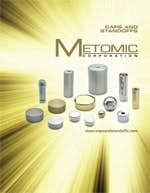Get Passive, Go Green
| June 2010 ♦ Vol. 8 Issue 6 |
Get Passive, Go Green
|
We need a new lens. Although technology is an important part of green building, we can’t look blindly to it for every solution. People need to be brought back into the equation to fix the problems we’ve created instead of looking to new technology to free us. In terms of buildings, a less-automated scenario that incorporates passive strategies and activates people can provide a boost to human health, social engagement, and the environment. Passive solutions are low-energy solutions. Indigenous architecture and historic buildings offer great lessons on sustainable strategies that we can integrate into new construction, but there are many things you can do in an existing facility too. Read more about using passive solutions to green your building …» |
A Natural Choice for Modern Spaces
Carpet made with DuPont™ Sorona® fiber provides permanent, natural stain resistance, superior durability, and complimentary color and design to enhance your space. It contains 37% renewably sourced ingredients by weight, meaning it uses less petroleum based ingredients - plus it can contribute to LEED®points in 3 areas. With so much beauty and innovation built in, it’s a natural choice for today’s commercial designs.
Click here for more information.
Both cutting costs and green buildings are here to stay. Passive building designs can help you cut costs while becoming greener because this method needs less work from fans and air handlers to push air around in order to maintain thermal conditions and air quality, while keeping building occupants comfortable.
Read more»
Going green doesn’t demand state-of-the-art advances or sophisticated features. In fact, some of the more successful sustainable concepts are grounded in tried-and-true practices and cost very little (if properly planned).
Read more»
In historic buildings, natural light fulfilled a fundamental need to operate. Today’s buildings rely on technology to replace that need, but at what cost?
Read more»
Making the connection between IT and facilities
Data centers must be viewed as interconnected environments—from rack to row to room to building. Schneider Electric calls this integration the data center physical infrastructure. The only clear path to the highest availability and maximum efficiency, it comprises power, cooling, physical security, and rack systems and is monitored and managed via software solutions and professional services. The result? Maximized energy efficiency and guaranteed availability across the data center physical infrastructure.
Click here to download the FREE white paper, “Tackling Today’s Data Center Energy Efficiency Challenges.”
This flush valve is designed to create energy during each flush cycle.
Read more»
Kelley's new High Volume Low Speed fans provide facilities with an energy-efficient and cost-effective cooling and heating solution.
Read more»
Silverback Solar Racking functions as an easy-to-spec system.
Read more»
Using the Three Cs to Market Your Green Building
Volume Certification Takes a Different LEED Tact
Finding Your Best Renewable Energy Strategy
LEED on a Budget
Tried and True – The Art of Simple Solutions and Integrated Design
Alternatives in Green Building Frameworks
Clearing Up LEED Misperceptions
Schools Offer Lessons in Building/User Interface
Foreign Exchange
Life-Cycle Cost Assessment as a Tool for Retrofits
@ the Moment | Updates you weekly on the latest news, products and events happening in the commercial buildings marketplace.
Security News | Keep up-to-date with the latest statistics and trends on security management in commercial facilities. Issued once per month.
Roofing News | Takes you to the top of the building with tips on which style of roofing product will fit your specific needs . Issued once per month.
Energy News | In-depth energy information for facilities professionals.
Greener Facilities | Confused about green? Each month you gain more understanding about the explosive growth and direction of the green building movement and what it means for you.


































